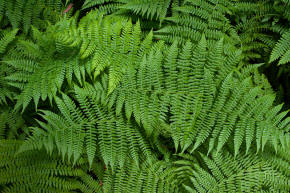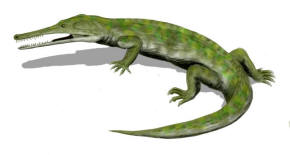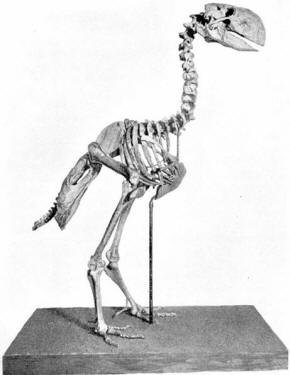The Paleocene Epoch immediately followed the mass extinction event at the end of the Cretaceous, known as the K-T boundary, which marks the demise of the dinosaurs (except their descendants, modern birds) and much other fauna and flora. The die-off of the dinosaurs left unfilled ecological niches worldwide, and the name "Paleocene" comes from Greek and refers to the "old(er)" (παλαιός, palaios) – "new" (καινός, kainos) fauna that arose during the epoch, before modern mammalian orders emerged in the Eocene Epoch.
Boundaries
The K-T boundary that marks the separation between Cretaceous and Paleocene is visible in the geological record of much of the Earth by a discontinuity in the fossil fauna, with high iridium levels. There is also fossil evidence of abrupt changes in flora and fauna. There is some evidence that a substantial but very short-lived climatic change may have happened in the very early decades of the Paleocene.
The end of the Paleocene (55.5/54.8 Ma) was marked by one of the most significant periods of global change during the Cenozoic. The Paleocene-Eocene Thermal Maximum upset oceanic and atmospheric circulation and led to the extinction of numerous deep-sea benthic foraminifera and a major turnover in mammals on land.
Climate
The early Paleocene was cooler and dryer than the preceding Cretaceous, though temperatures rose sharply during the Paleocene–Eocene Thermal Maximum. The climate became warm and humid worldwide towards the Eocene boundary, with subtropical vegetation growing in Greenland and Patagonia, crocodiles swimming off the coast of Greenland, and early primates evolving in tropical palm forests of northern Wyoming. The Earth's poles were cool and temperate; North America, Europe, Australia and southern South America were warm and temperate; equatorial areas had tropical climates; and north and south of the equatorial areas, climates were hot and arid.
Paleogeography
In many ways, the Paleocene continued processes that had begun during the late Cretaceous Period. During the Paleocene, the continents continued to drift toward their present positions. Supercontinent Laurasia had not yet separated into three continents - Europe and Greenland were still connected, North America and Asia were still intermittently joined by a land bridge, while Greenland and North America were beginning to separate. The Laramide orogeny of the late Cretaceous continued to uplift the Rocky Mountains in the American west, which ended in the succeeding epoch.
South and North America remained separated by equatorial seas. The components of the former southern supercontinent Gondwanaland continued to split apart, with Africa, South America, Antarctica and Australia pulling away from each other. Africa was heading north towards Europe, slowly closing the Tethys Ocean, and India began its migration to Asia that would lead to a tectonic collision and the formation of the Himalayas.
The inland seas in North America (Western Interior Seaway) and Europe had receded by the beginning of the Paleocene, making way for new land-based flora and fauna.
Flora
Terrestrial Paleocene strata immediately overlying the K-T boundary is in places
 |
| Ferns (Picture Source) |
In general, the Paleocene is marked by the development of modern plant species. Cacti and palm trees appeared. Paleocene and later plant fossils are generally attributed to modern genera or to closely related taxa.
The warm temperatures worldwide gave rise to thick tropical, sub-tropical and deciduous forest cover around the globe (the first recognizably modern rain forests) with ice-free polar regions covered with coniferous and deciduous trees. With no large grazing dinosaurs to thin them, Paleocene forests were probably denser than those of the Cretaceous.
Flowering plants (angiosperms), first seen in the Cretaceous, continued to develop and proliferate, and along with them coevolved the insects that fed on these plants and pollinated them.
Fauna
Mammals
Mammals had first appeared in the Triassic, evolving from advanced cynodonts, and developed alongside the dinosaurs, exploiting ecological niches untouched by the larger and more famous Mesozoic animals: in the insect-rich forest underbrush and high up in the trees. These smaller mammals (as well as birds, reptiles, amphibians, and insects) survived the mass extinction at the end of the Cretaceous which wiped out the non-avian dinosaurs, and mammals diversified and spread throughout the world.
While early mammals were small nocturnal animals that mostly ate soft plant material and small animals such as insects, the demise of the non-avian dinosaurs and the beginning of the Paleocene saw mammals growing bigger and occupying a wider variety of ecological niches. Ten million years after the death of the non-avian dinosaurs, the world was filled with rodent-like mammals, medium sized mammals scavenging in forests, and large herbivorous and carnivorous mammals hunting other mammals, birds, and reptiles.
Fossil evidence from the Paleocene is scarce, and there is relatively little known about mammals of the time. Because of their small size (constant until late in the epoch) early mammal bones are not well-preserved in the fossil record, and most of what we know comes from fossil teeth (a much tougher substance), and only a few skeletons.
Paleocene mammals did not yet have specialized teeth or limbs, and their brain to body mass ratios were quite low; compared to later forms, they are considered primitive, or archaic. It was not until the Eocene, 55 Ma, that true modern mammals developed.
Mammals of the Paleocene include:
Monotremes: three species of monotremes have survived to modern times: the Platypus, and two species of Echidnas. Monotrematum sudamericanum lived during the Paleocene.
Marsupials: modern kangaroos are marsupials, characterized by giving birth to embryonic babies, who crawl into the mother's pouch and suckle until they are developed. The Bolivian Pucadelphys andinus is a Paleocene example.
Multituberculates: the only major branch of mammals to go extinct since the K-T boundary, this rodent-like grouping includes the Paleocene Ptilodus.
Placentals: this grouping of mammals became the most diverse and the most successful. Members include primates, plesiadapids, and hoofed ungulates, including the condylarths and the carnivorous mesonychids.

